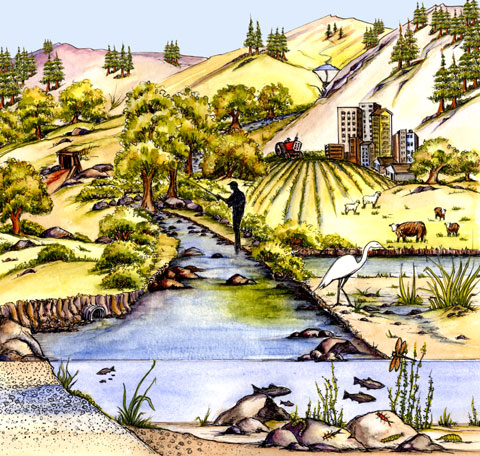California Streams, Rivers and Lakes

Environmental Characteristics: Buffer | Riparian Cover | Algae | Bugs | Fish | Fines & Sands | Gravels | Cobbles & Boulders | Riffles & Rapids | Pools | Groundwater | Water Quality | Sediment Quality | Stream Gradient | Channel Stability | Channel Characteristics | Hydrologic Connectivity | Hydrologic Sufficiency | Sediment Balance
Stressors: Urban | Agriculture | Other Land Uses | Fish Contaminants | Invasive Species
Navigation Instructions:
Move your mouse over the picture to explore the variety of attributes that affect stream health. Click on an attribute to see why it is important and how we measure it. You can also click on one of the stream attributes listed above.

